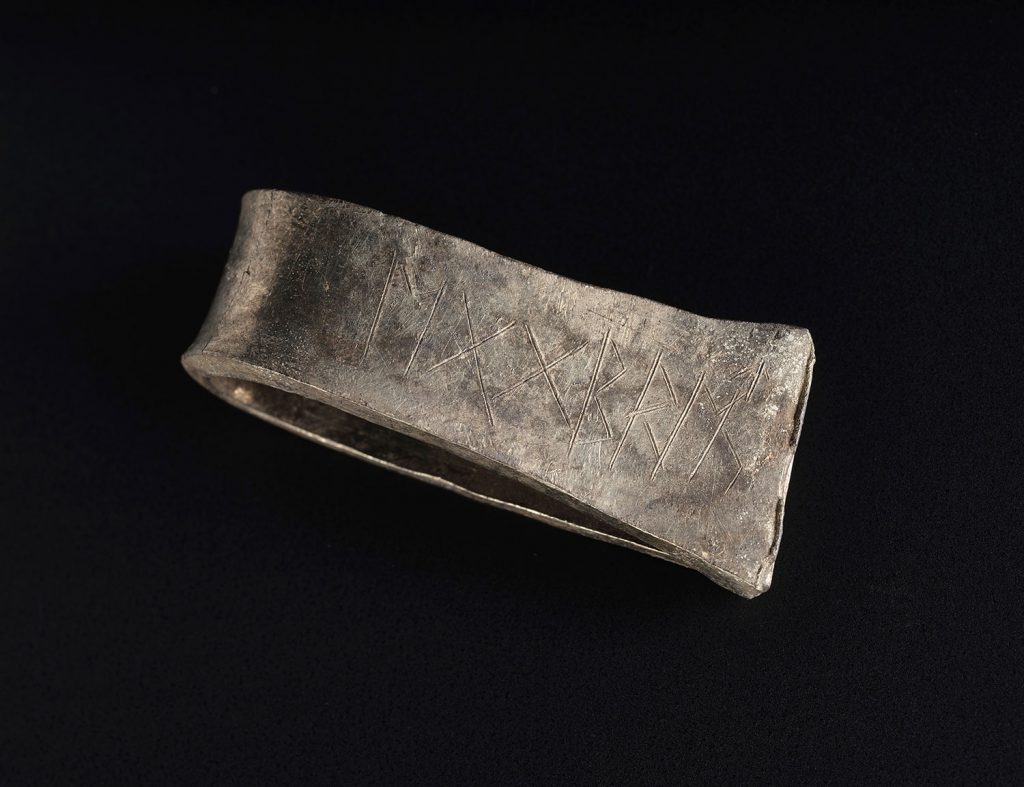Around AD 900 an extraordinary collection of treasure was deliberately buried in the Galloway earth for safe-keeping. Who hid it?
This is the most frequent question we are asked about such discoveries and yet the most difficult to answer. But the Galloway hoard has some important clues which point us in a surprising direction…

The largest group of objects in the Galloway hoard are ‘Hiberno-Norse’ silver arm-rings familiar from numerous discoveries of 10th-century AD hoards around the Irish Sea coastlands, and usually taken to indicate Viking activity. Five of the arm-rings have runic inscriptions scratched into them. They look as if they may have functioned as labels identifying distinct portions of the hoard and may record the names of the people who owned and buried them.
Yet the runes are not of the familiar Scandinavian variety employed around this date and common, for instance, on the nearby Viking-dominated Isle of Man. As first recognised by Elisabeth Okasha of the University of Cork, the Galloway hoard runes are of a distinctively Anglo-Saxon type. And while several of the texts are abbreviated and tricky to interpret, one – that has only recently been examined – proves to be splendidly clear: eggbrect, a form of Old English Ecgbeorht (Egbert), a very common name amongst the Anglo-Saxons.

The Galloway ‘Viking’ hoard, therefore, offers a challenge to easy ethnic labels. To judge by name and choice of script, the people involved may have considered themselves part of the English-speaking world. This is not so surprising in its regional context: Galloway was part of Anglo-Saxon Northumbria by the early 8th century, and elements of the population may well have clung to that identity as late as the 10th.
Of course, the people whose names are scratched on the silver bullion are not certainly the people who buried the hoard, but they do seem to have claimed ownership of at least parts of it shortly before it was buried. Were they involved in activities we might consider ‘Viking’? Or were they locals burying their wealth as a response to a Viking threat? Who did they think they were? These are questions that only a complete analysis of the Galloway hoard will be able to get closer to answering.
You can find out more about the hoard at www.nms.ac.uk/gallowayhoard.
